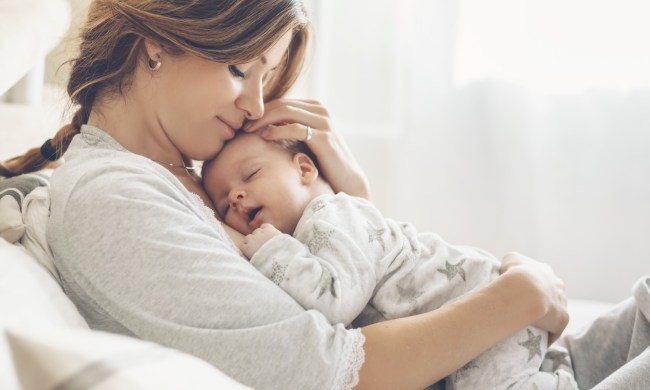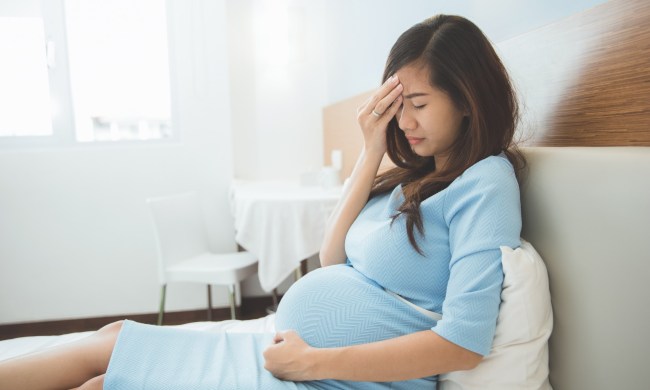One of the most important items that you can pack in your hospital bag are postpartum pads. Of course, the hospital will likely provide you with some pads right after labor and delivery. Nonetheless, you’ll need some extras for the day when you and your baby go home. Luckily, we found seven of the best pads that offer plenty of comfortable protection. If you’re wondering what qualities to look for, read on.
Why and for how long do you need postpartum pads after giving birth?
Postpartum pads are a necessary item to pack in your hospital bag as your due date draws near. Considering the changes that your body goes through immediately after giving birth, you’ll find these pads will play a crucial role. In fact, some new moms might pack postpartum pads in their bag and even include a pair or two of incontinence underwear for “back-up.”
Regardless, you’ll probably need a pad that’s constructed from soft material, has an extra-long length, and wings to keep it from slipping or bunching. Most products are hypoallergenic, but there are a few organic options if you want an item that’s made from soft, natural fibers.
Stayfree Ultra-Thin Super Long Pads
The Stayfree Ultra Thins work well as postpartum pads because of their long length and wings that keep them in place. Plus, their 3-in-1 system gives protection that provides different degrees of absorbency—whether you experience heavy flow or light discharge. The inner core prevents fluid from leaking out while the “leak protection ring” adds another layer of protection. Also, you have the added assurance and comfort from the soft, cotton cover that guards against irritation and keeps you dry. Finally, the small, individual packets fit discreetly in your purse or diaper bag.
Tranquility Personal Care Pads
These postpartum pads, with their signature peach-toned mat core, provide extra absorbency and an effective side guard with elastic gathering around the outer edge of each side. This same core transforms liquid into gel, thus drawing it away from you and preventing it from escaping. The cloth-like layer on the back of the pad allows for movement without making a crinkling sound that gives the pad away. Moreover, this same layer prevents moisture from leaking through while absorbing odor. This pad proves to be ideal for the second to third week, or even the days immediately following your arrival home depending on how heavy your flow is.
Instant Ice Maxi Postpartum Pads
For the first 24 to 48 hours after giving birth, the Frida Instant Ice Maxi Pads offer both relief from postpartum discomfort and extra absorbency. This hospital bag necessity not only absorbs flow that occurs right after giving birth but also soothes any perineal soreness without the ice chips. These postpartum pads are quite easy to use. You simply snap the middle of the pad in two to activate the cooling part which lasts for 20 minutes. The adhesive strip in the back keeps the pad from slipping while the top layer draws moisture away from your body.
Natracare Organic Maternity Pads
If you prefer postpartum pads that won’t irritate your skin, you can opt for Natracare Organic Maternity Pads, which are made from organic cotton. Furthermore, they are produced without dyes, perfumes, or chlorine. Therefore, you won’t have the worry about irritants or allergens. Another advantage to the Natracare brand is that the pad’s materials are over 95 percent biodegradable, although you should still refrain from flushing them. Basically, this brand is not only one of the most comfortable and absorbent, but also one of the friendliest for the environment.
Always Maxi Feminine Pads Overnight
The Always brand possesses two signature qualities that make its products stand out from the rest and characterizes them as “high-quality postpartum pads that provide three times the protection from leaks as compared to the regular size pads.” For starters, the “LeakGuard” core gives you 10 hours’ worth of protection by locking in fluid. The bottom layer absorbs moisture within seconds and draws it away from the surface. Likewise, its hourglass shape ensures ample coverage and comfort while the Flex Wings and adhesive backing provide a secure attachment to the underwear.
Depend FIT-Flex Incontinence Underwear for Women, Maximum Absorbency
If you’re looking for additional protection that’ll get you through the early postpartum days, then the FIT-Flex underwear by Depend offers a great option. The soft fabric material that feels like cloth underwear won’t chafe or irritate your skin and doesn’t rustle as you move. Additionally, Depend’s Dry Shield gives you maximum absorbency through padding that’s built into the underwear. This padding absorbs moisture within seconds and locks it away from your skin. The soft elastic also provides leak-proof protection without cutting into your skin. So, you can feel assured that the long-lasting shield guards against leaks without sacrificing comfort.
Rael Organic Cotton Menstrual Regular Pads
One other option is Rael for anyone who prefers a product that’s made from all-natural materials by an environmentally conscious company. In fact, it’s created from 100 percent organically grown cotton minus any perfumes, dyes, chlorine, or chemical carcinogens. Nonetheless, one of its most important traits includes its absorbency system that involves the Leak Locker and the extra-long length that reaches to the backside without looking bulky. The winged sides also keep the pad in place.
So, there you have the top seven postpartum pads that’ll get you through the first few weeks. Better yet, some of these selections double up as menstrual pads which will save an additional trip to the store. Nevertheless, with any of these pads, you’ll have secure protection from leaks which means more time for more important things—like enjoying those first days with your newborn.



